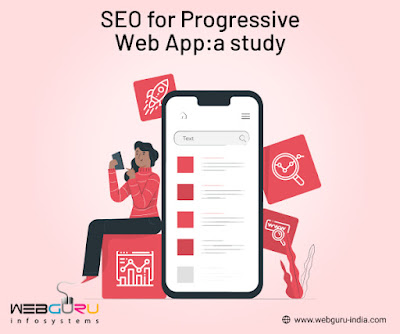Since the App Store and the Android Market (now Google Play) launched back in 2008, the market for mobile app development has seen an exponential surge. As of 2022, there are about 5 million apps available for download on these two platforms alone (buildfire). This demand for quality app development has been especially high in the eCommerce industry, so much so that it saw the emergence of a brand new subset - mobile commerce, commonly called mCommerce.
The truth is that mobile applications open up multiple avenues for retailers to reach and connect with their clients, and reach an even wider set of audiences. Today, small businesses regularly hire the services of mobile app development companies in order to boost their growth, and it has been proven to work. Here are 5 reasons why every small business should consider a mobile app.
Brand Recognition
According to a survey, Indians spent about 4.7 hours everyday on their smartphones (Economic Times). In the US, that number is over 5 hours (Statista). This is time that brands can use to build a stronger connection to customers through mobile apps. For example, integrating popular social media platforms in your app will let people easily share links to your products, and discuss their favorite products and services. This is a powerful tool in building a reputation for your brand, since most users willingly share links to their favorite sites, describe their own experiences, and request feedback in social network circles. It serves as a way to easily advertise your service, and garner the attention of potential customers.
Additionally, you can also use a mobile app to send push notifications to customers, regularly talking about special sales, discounts, offerings, and giveaways. Such offers will naturally cause a customer to shift towards your shop, seeing as they might be able to save money.
Convenience
Although mobile apps generally provide the same utility as a website, it is highly optimized for mobile devices, well-designed, and brings significant improvements to customer experiences. Convenient apps not only help in retaining these customers, but simultaneously also bringing in new ones.
- Mobility - Customers will get more freedom to be using your app from any place and at any time. Using the full power of modern smart devices, your app can also provide basic offline functionalities, such as the ability to check and compare prices and features of products.
- Loading Time - Since apps are well optimized for smartphones, their pages will load faster. In the retail business, even seconds make a difference in whether a customer will choose you over your competitors. A fast loading app providing a quick and streamlined shopping experience means many more possible customers get reeled in.
- Personalization - Customers generally expect companies to remember recent transactions and orders, and make personalized marketing efforts based on their individual preferences. Mobile apps are the ideal platform for this. Not only do they efficiently store customer shopping data, but they can also easily gather more critical customer data from the smartphone's own data collection that the customers have to approve of.
Better Customer Experience and Service
Mobile apps promote a two-way interaction between small business and customers. As mentioned earlier, the apps can get permission from the users to push notifications directly into their devices, informing them about sales events, promos, or new products. Interactive chat options, similarly, can help your customers connect with you anytime, from anywhere.
Loyalty programs such as reward points or discounts meted out through the app can truly boost the image as well as the sales of your brand. It will keep customers coming back, and it will also encourage them to speak positively about your business to friends and family, which means further growth in your customer base.
Individual mobile phones can now also be used as a replacement for cash and credit/debit cards, and can be used as a means of contactless payment. Payment apps are easy to use, fast, and secure. They can be integrated easily into any eCommerce business app.
Boost Revenues
An increase in customer satisfaction typically means an increase in sales as well. In fact, upto 70% of customers’ buying experiences will primarily be influenced by how they feel they are being treated (SalesForce). The more interested people are in your business and the way you manage it, the greater the consumer demand you will see. And if you manage to offer a product that most customers cannot wait to purchase, then the returns are going to be truly something to behold. And this is where an app can prove most handy.
Black Friday of 2020 saw eCommerce app installations in the US rise by about 43%, while consumer spending rose by 143% (as compared to the previous 3 Fridays) (AppsFlyer). When Domino’s Pizza released a mobile app back in 2012, they saw a surge of 28% in half-yearly pre-tax profits in the United Kingdom alone (Financial Times). All of this points to a trend that makes it evidently clear that mobile apps that make it easy and exciting for customers to click on the “Buy” button will provide a huge boost in revenue, even if your business already owns a mobile-optimized website.
Detailed Analytics
It is relatively easy to gather and track information from an app. Mobile analytics will allow you to monitor every user’s interaction levels, and provide valuable feedback about them such as average session length, individual responsiveness to specific content, etc. This information will be valuable in creating updates and improvements, and also in creating personalized content, advanced marketing strategies, and well-made promotional campaigns.
Conclusion
Worldwide mobile commerce sales registered around $3.56 trillion in 2021 - a growth of over 22.3% from the $2.91 trillion it saw in 2021. These sales account for nearly 73% of all global eCommerce (Oberlo). These numbers are not only staggering, but a true eye-opener as to the profits an app can bring for a business.




